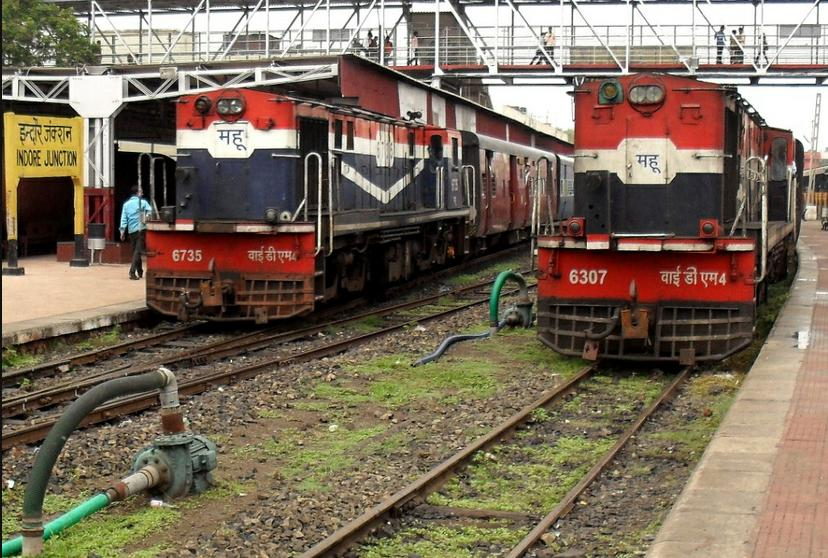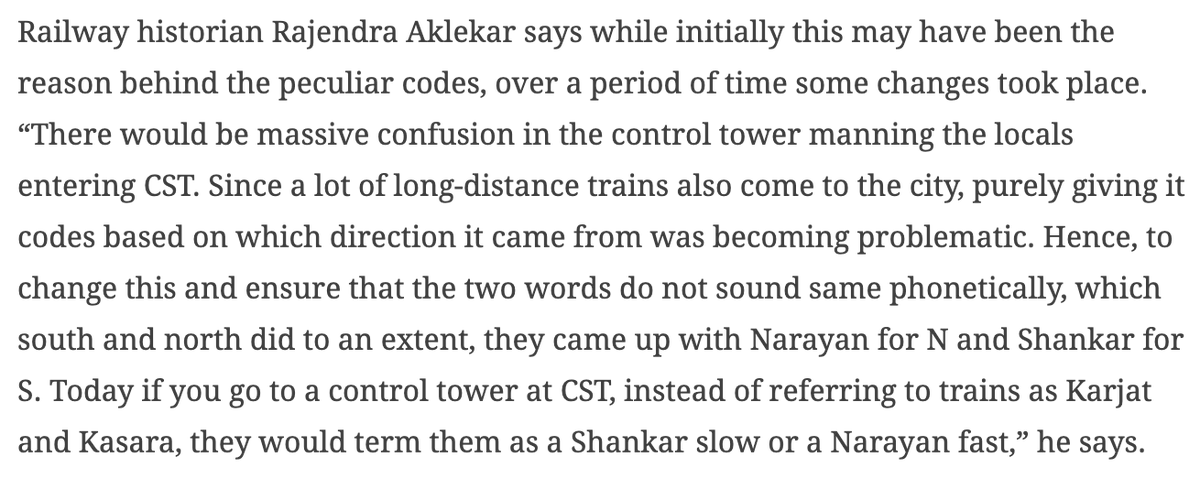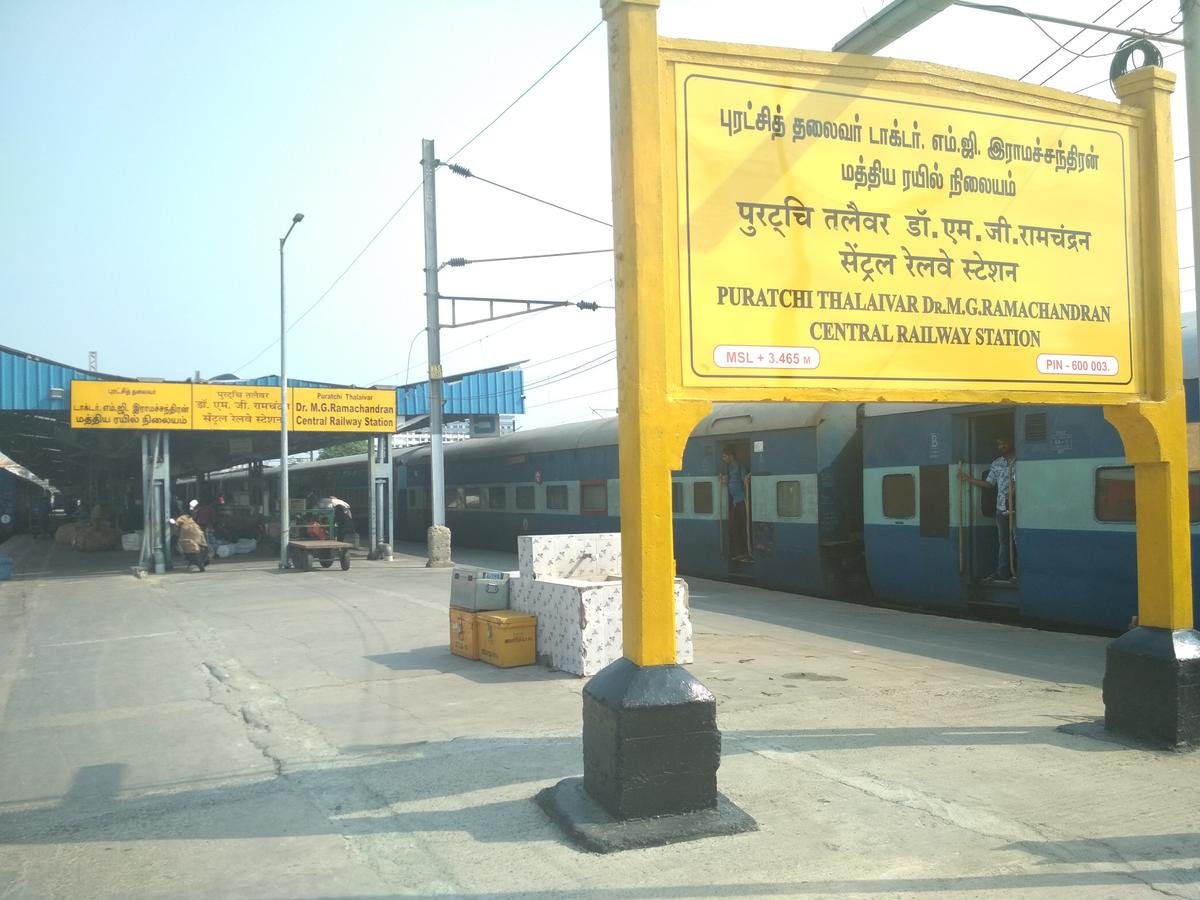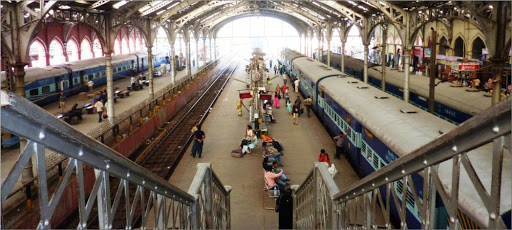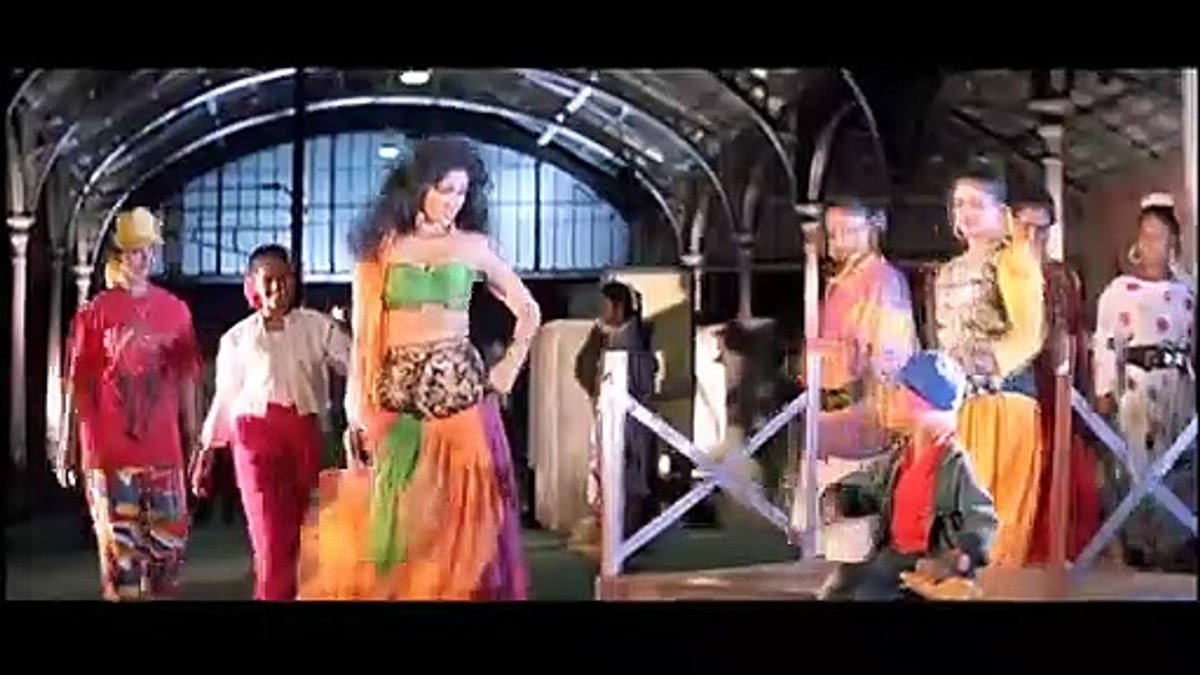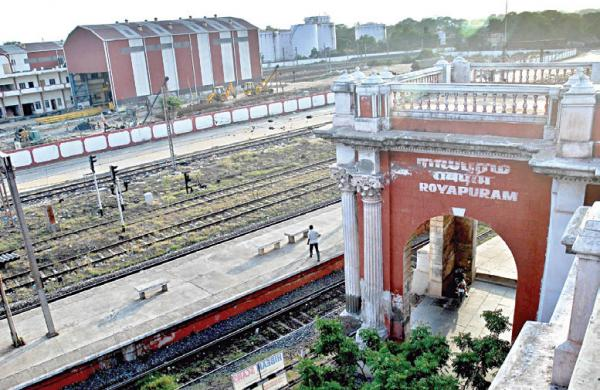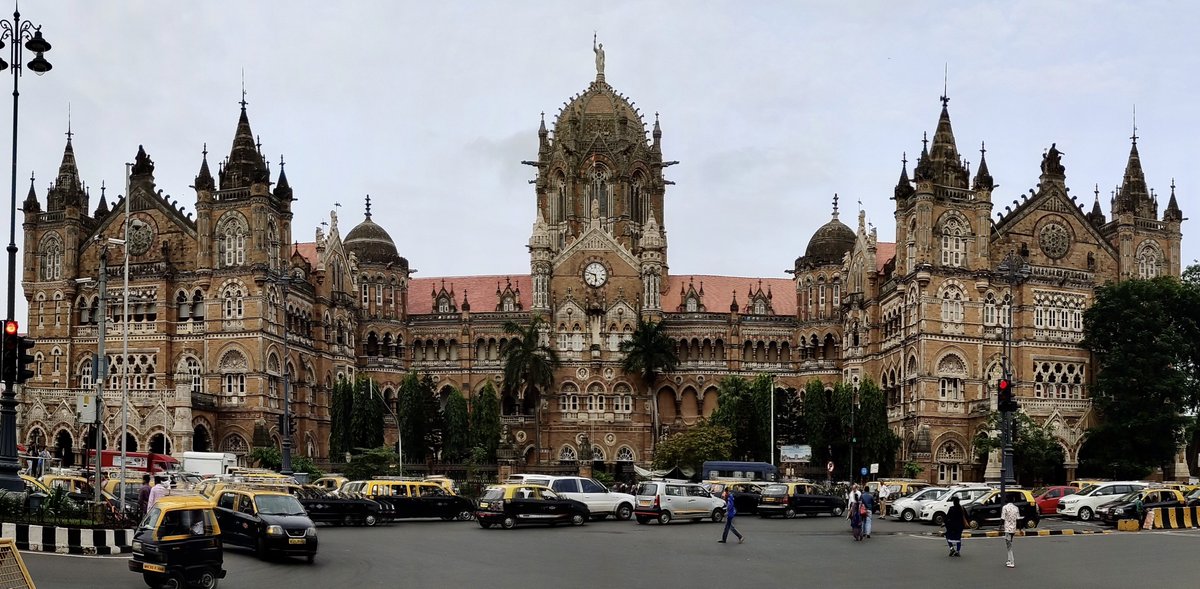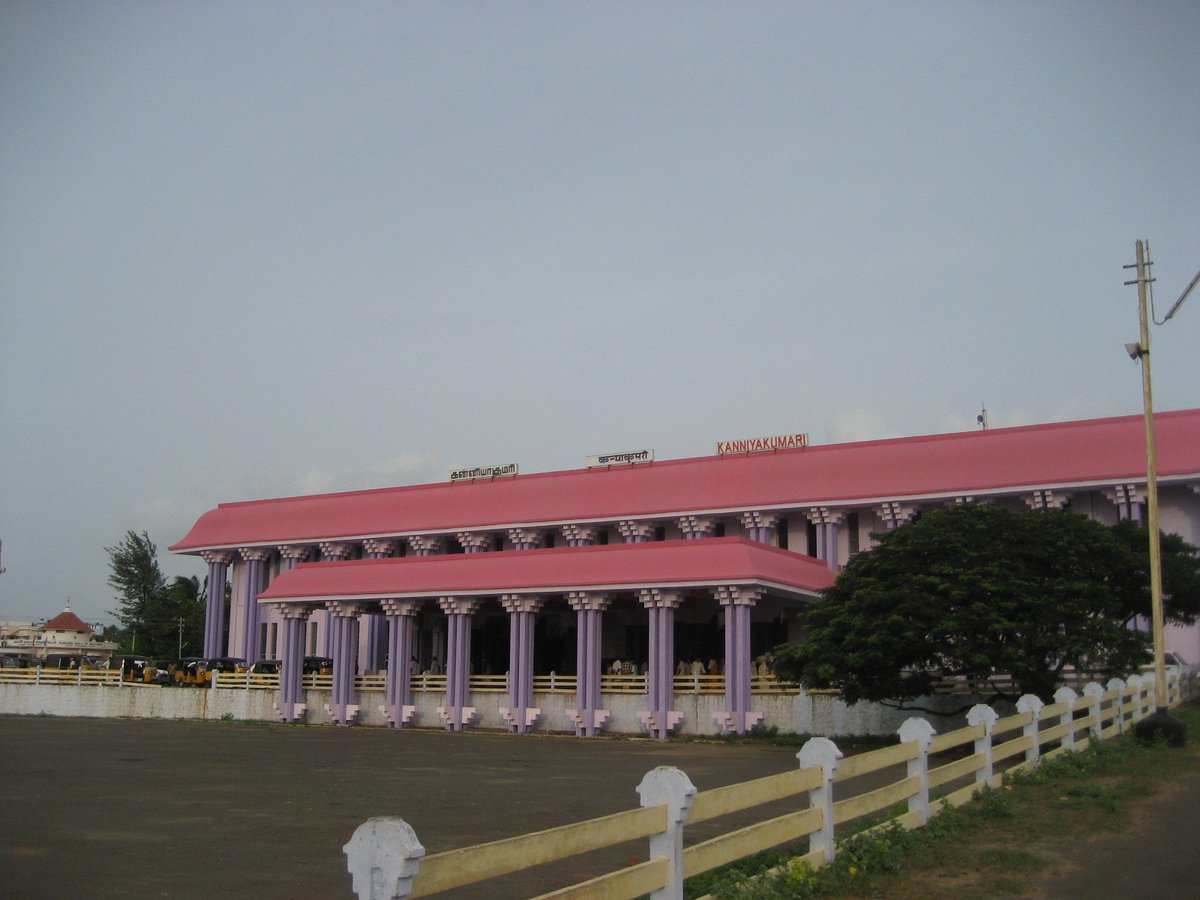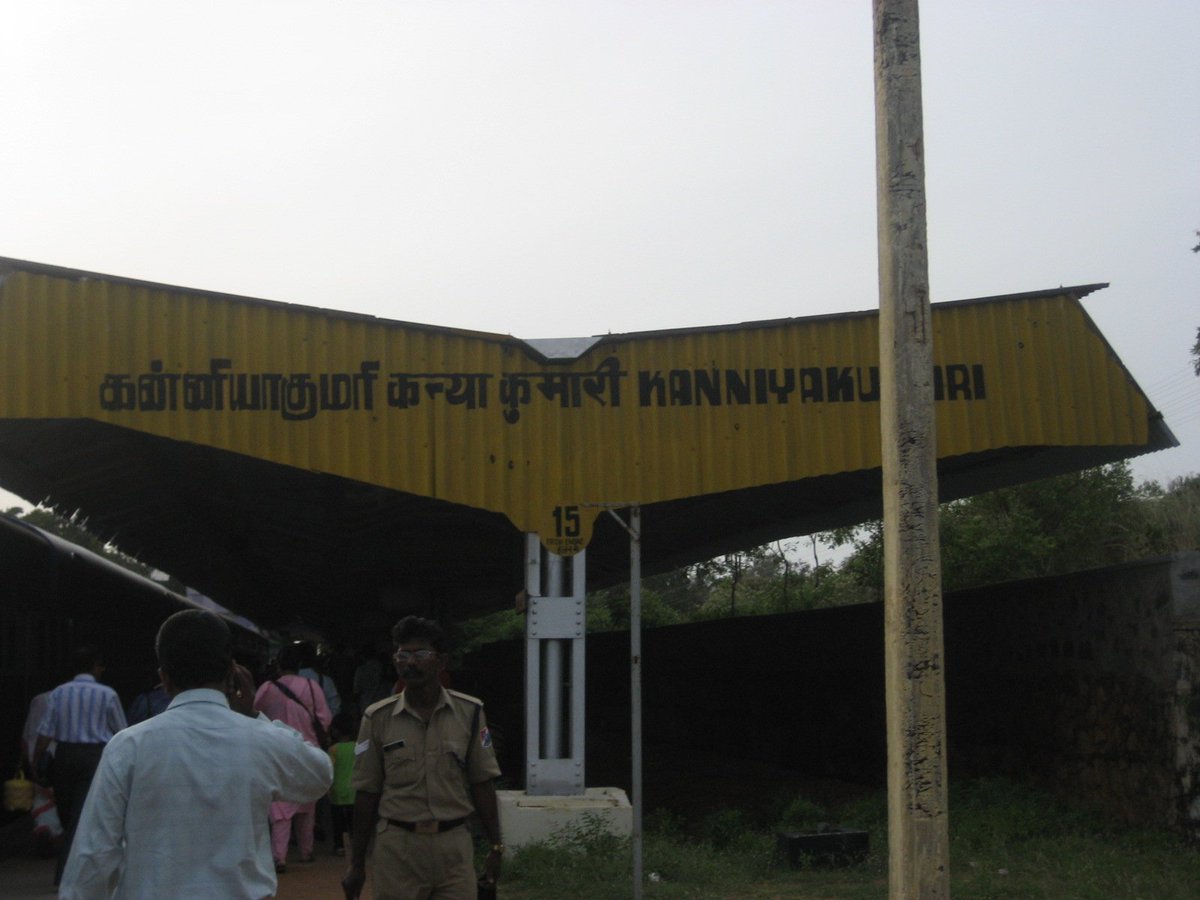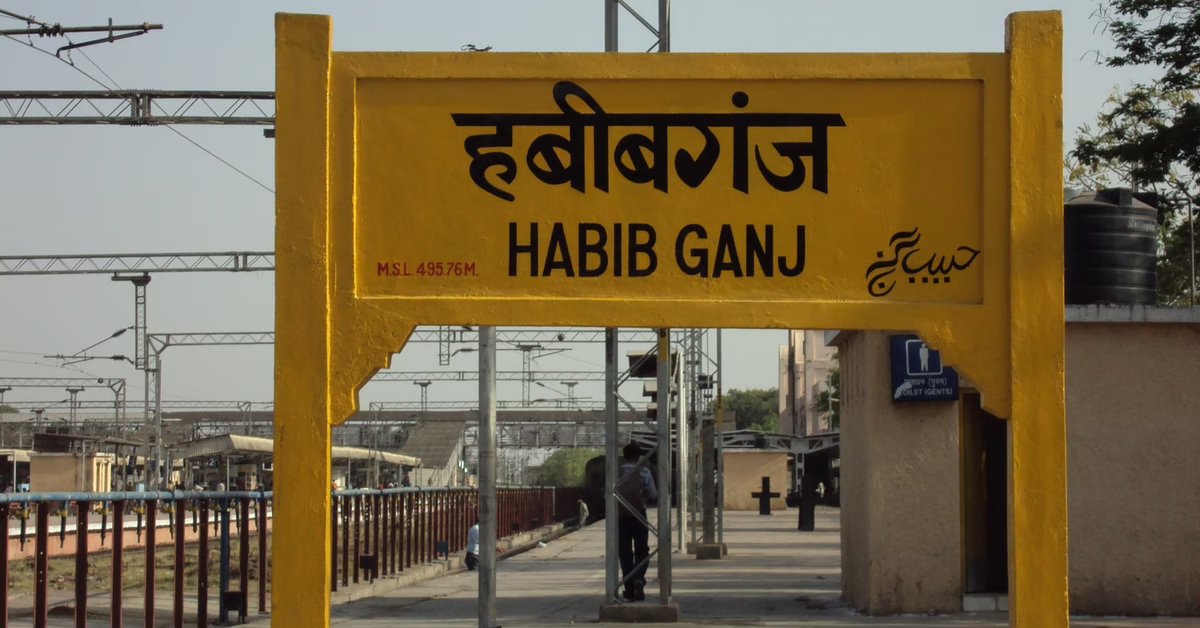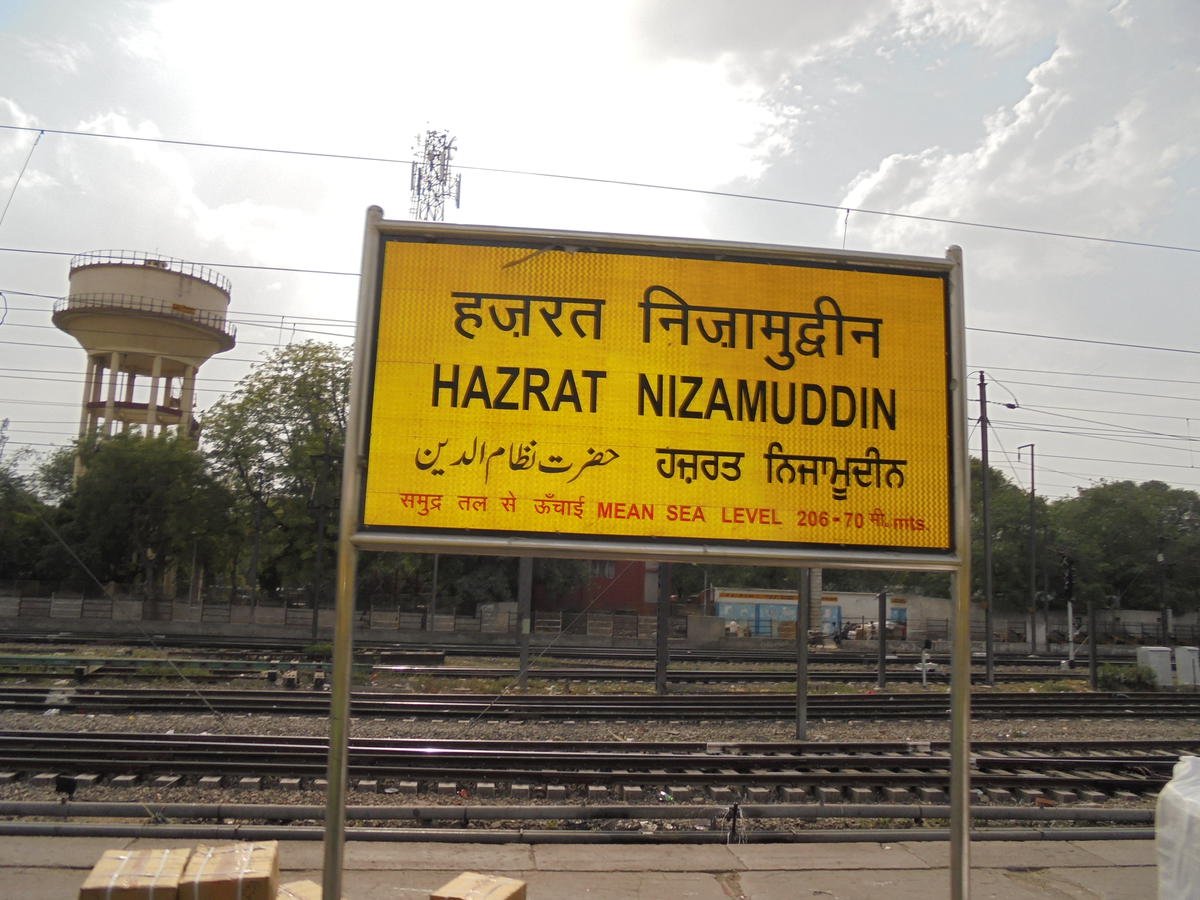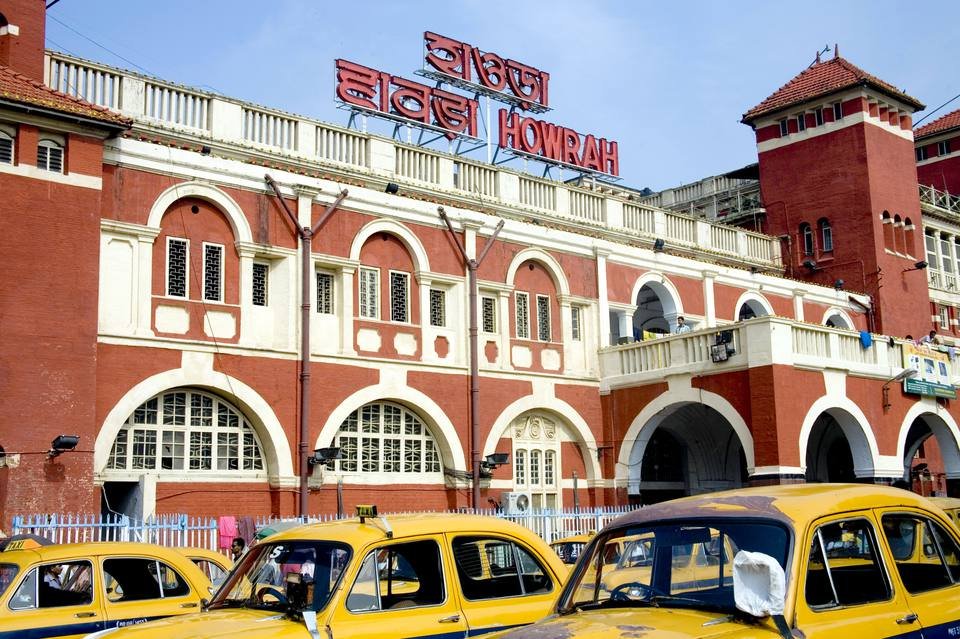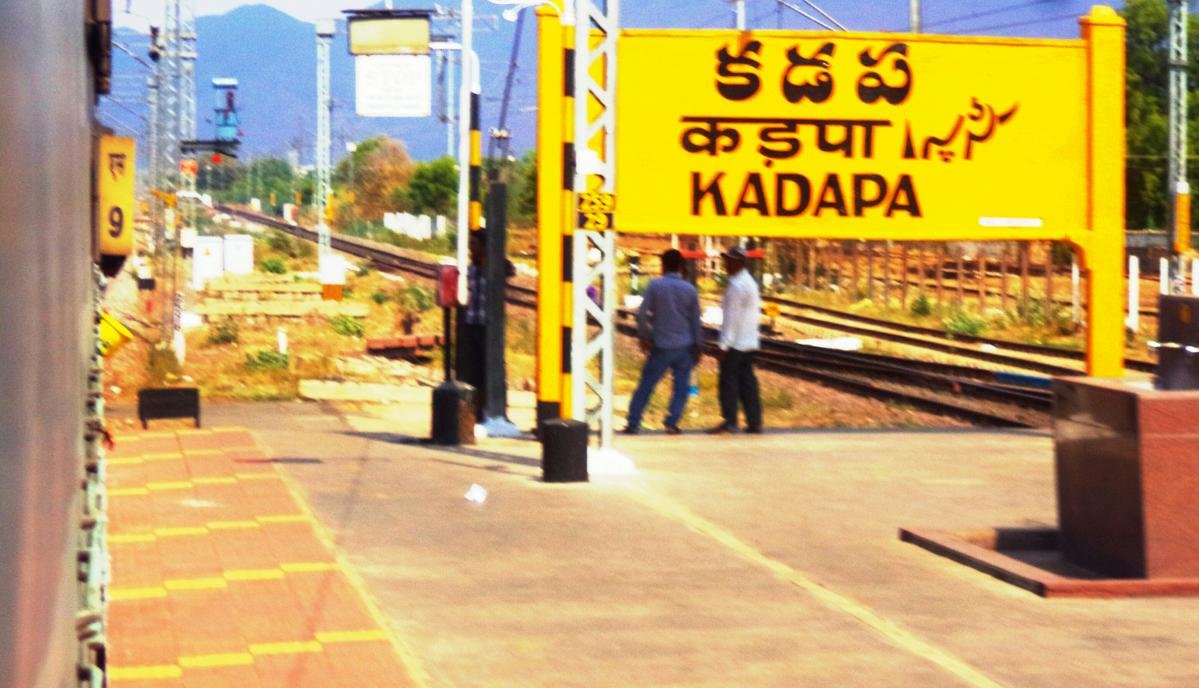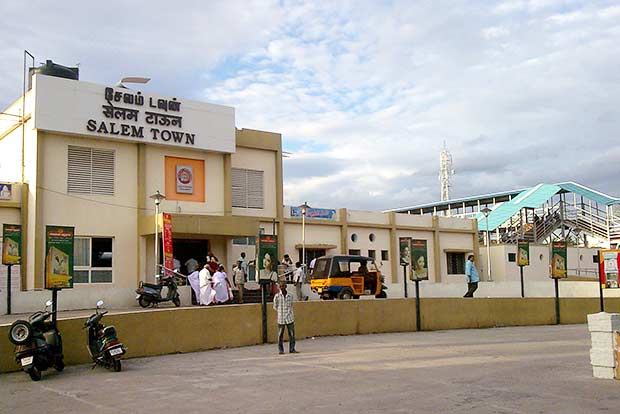On yesterday& #39;s Salem Junction Twitter Space with @krishashok and @sidin (featuring special guest @supriyan), I shared a couple of anecdotes about the fascinating stations codes on the Indian Railways (IR) network. So here, a short thread  https://abs.twimg.com/emoji/v2/... draggable="false" alt="🚂" title="Dampflokomotive" aria-label="Emoji: Dampflokomotive">
https://abs.twimg.com/emoji/v2/... draggable="false" alt="🚂" title="Dampflokomotive" aria-label="Emoji: Dampflokomotive">  https://abs.twimg.com/emoji/v2/... draggable="false" alt="🧵" title="Thread" aria-label="Emoji: Thread"> -
https://abs.twimg.com/emoji/v2/... draggable="false" alt="🧵" title="Thread" aria-label="Emoji: Thread"> -
Codes, of course, have been a ubiquitous part of rail (and now air) travel. They help identify where we are going, where something belongs, and where we are at - all in a short and succinct way.
But there is a whole world behind these codes and what they stand for.
In India, given the history of the railways, a lot of the station codes reflect colonial names from the past.
So Palakkad Junction becomes PGT (for Palghat), Kanpur Central becomes CNB (from Cawnpore), etc.
In India, given the history of the railways, a lot of the station codes reflect colonial names from the past.
So Palakkad Junction becomes PGT (for Palghat), Kanpur Central becomes CNB (from Cawnpore), etc.
Some station codes reflect older, more traditional names - a stellar example, and one of my favorite codes and stations on the entire network - is BZA. This of course is Vijayawada& #39;s older name, Bezawada.
(Ask me and @purisubzi about the amazing 1:30am bread-omelette at BZA)
(Ask me and @purisubzi about the amazing 1:30am bread-omelette at BZA)
Then there are the codes that are the names of the stations themselves.
Places like WADI, TADA, ALER, PUNE (which changed from PA to the full name) ...
... and the amusingly named SALI, on the North Western Railway (NWR) in Rajasthan.
Places like WADI, TADA, ALER, PUNE (which changed from PA to the full name) ...
... and the amusingly named SALI, on the North Western Railway (NWR) in Rajasthan.
There is sometimes a method to the madness - junction stations often have a J tacked on at the end - AJJ for Arakkonam, JTJ for Jolarpet.
And cantonments - or Cantts - feature a C: BNC for Bangalore Cantt, AGC for Agra Cantt, DEC for Delhi Cantt. https://twitter.com/krtgrphr/status/1092304916004036608">https://twitter.com/krtgrphr/...
And cantonments - or Cantts - feature a C: BNC for Bangalore Cantt, AGC for Agra Cantt, DEC for Delhi Cantt. https://twitter.com/krtgrphr/status/1092304916004036608">https://twitter.com/krtgrphr/...
Other letters are sometimes used to indicate relative direction - BNE for Bangalore East, ERN/ERS for Ernakulam Town (North) and Ernakulam Jn. (South).
(This image from an early morning at BNE, getting off the KCG-SBC Express - you& #39;ll learn the codes soon https://abs.twimg.com/emoji/v2/... draggable="false" alt="😉" title="Zwinkerndes Gesicht" aria-label="Emoji: Zwinkerndes Gesicht">)
https://abs.twimg.com/emoji/v2/... draggable="false" alt="😉" title="Zwinkerndes Gesicht" aria-label="Emoji: Zwinkerndes Gesicht">)
(This image from an early morning at BNE, getting off the KCG-SBC Express - you& #39;ll learn the codes soon
Letters were also used in the past to distinguish gauge - Indore Junction, which featured both broad and meter gauges, went by INDB and INDM respectively. This is now mostly a vestige of the past, with rapid gauge conversion across the network.
Then come the really interesting stories from suburban networks -
If you zoom in on the Mumbai suburban network, there is C for Kurla (from "Coorlie" in British times, so okay) and ... N for Kasara and S for Karjat?!
If you zoom in on the Mumbai suburban network, there is C for Kurla (from "Coorlie" in British times, so okay) and ... N for Kasara and S for Karjat?!
There is a great article in the Indian Express on this, with this great anecdote from @rajtoday -
(Full article here: https://indianexpress.com/article/cities/mumbai/c-for-kurla-decoding-mumbai-railway-station-codes-in-4513159/)">https://indianexpress.com/article/c...
(Full article here: https://indianexpress.com/article/cities/mumbai/c-for-kurla-decoding-mumbai-railway-station-codes-in-4513159/)">https://indianexpress.com/article/c...
Station codes also offer a fantastic link to the historical past of a city. In Chennai, Central is of course the most recognizable station - and it goes by MAS.
Although its latest name change may not quite fit on tickets - paper or electronic - anymore...
Although its latest name change may not quite fit on tickets - paper or electronic - anymore...
Egmore, next door, with its grander but more overlooked architecture, goes by MS (not Subbulakshmi), and used to be the terminus for all trains heading south from Madras.
Made immortal in the 90s, of course, in Chikkubukku Rayile from Gentleman.
Made immortal in the 90s, of course, in Chikkubukku Rayile from Gentleman.
And then of course there is RPM - Royapuram.
Now more known for the electric loco shed that powers (no pun) your Shatabdis and Expresses, it was one of the earliest stations on the IR network, and still retains much historic value.
Now more known for the electric loco shed that powers (no pun) your Shatabdis and Expresses, it was one of the earliest stations on the IR network, and still retains much historic value.
Of course, as with all great historical entities, the railways keep changing with the times as well.
No better example of this than Mumbai& #39;s landmark VT station. It went from BBVT (Bori Bunder / Bombay Victoria Terminus) to CSTM (Chatrapati Shivaji Terminus Mumbai).
No better example of this than Mumbai& #39;s landmark VT station. It went from BBVT (Bori Bunder / Bombay Victoria Terminus) to CSTM (Chatrapati Shivaji Terminus Mumbai).
Or indeed today& #39;s Lokmanya Tilak Terminus (LTT), from Kurla Terminus; or Vasai Road (BSR), from Bassein, its older name when the Brits were around.
There are also very interesting codes like CAPE - which stands for Kanyakumari, the southernmost railhead in India. And this of course comes from its former name, Cape Comorin.
Another very curious instance is station codes that give no indication of the city or town they are in -
Examples here include Habibganj (HBJ), Kacheguda (KCG), and perhaps the most famous, Hazrat Nizamuddin (NZM).
(Bhopal, Hyderabad, and Delhi, if you were wondering).
Examples here include Habibganj (HBJ), Kacheguda (KCG), and perhaps the most famous, Hazrat Nizamuddin (NZM).
(Bhopal, Hyderabad, and Delhi, if you were wondering).
There are locally concentrated examples of this as well -
Kolkata, for example, famously boasts of Howrah Junction (HWH).
But it also includes other important stations like Shalimar (SHM), Sealdah (SDAH), and Santragachi (SRC).
Kolkata, for example, famously boasts of Howrah Junction (HWH).
But it also includes other important stations like Shalimar (SHM), Sealdah (SDAH), and Santragachi (SRC).
A lot of station codes are only known - to railfans and the more-than-usually-observant traveler - due to their associations with locomotives.
AJJ, GOC, BGKT, ED, UBL, LGD ...
(Arakkonam, Golden Rock/Ponmalai, Bhagat Ki Kothi, Erode, Hubli, Lallaguda)
AJJ, GOC, BGKT, ED, UBL, LGD ...
(Arakkonam, Golden Rock/Ponmalai, Bhagat Ki Kothi, Erode, Hubli, Lallaguda)
And finally - to round it off - are the truly bizarre ones, which are debates and mysteries to this day.
I brought up HX (Kadapa!) yesterday, but there are also CHE (Srikakulam Road?!), and Khairatabad (K..QD?!).
Eternal conversation starters with the railfan in your life.
I brought up HX (Kadapa!) yesterday, but there are also CHE (Srikakulam Road?!), and Khairatabad (K..QD?!).
Eternal conversation starters with the railfan in your life.
And because we have to end where we started -
Salem Junction itself is the mostly staid and uninteresting "SA".
But the more interesting one here is Salem Town, whose code is SXT.
Salem Junction itself is the mostly staid and uninteresting "SA".
But the more interesting one here is Salem Town, whose code is SXT.
There are also some great data resources if you want to play around a bit more with station names and codes -
1. https://medium.com/@amitjenaiitbm/the-tale-of-indias-8495-railway-stations-65737408c0ae">https://medium.com/@amitjena... by @amitjenaiitbm
2. The Indian Railways data repo on Github: https://github.com/datameet/railways">https://github.com/datameet/...
1. https://medium.com/@amitjenaiitbm/the-tale-of-indias-8495-railway-stations-65737408c0ae">https://medium.com/@amitjena... by @amitjenaiitbm
2. The Indian Railways data repo on Github: https://github.com/datameet/railways">https://github.com/datameet/...
And of course, for all your Indian Railways related interests and curiosities, the IRFCA website must be the number one destination:
1. IRFCA: http://irfca.org/
2.">https://irfca.org/">... Station Names & Codes: https://irfca.org/apps/station_codes/list
3.">https://irfca.org/apps/stat... Some interesting station trivia: https://www.irfca.org/faq/faq-trivia.html">https://www.irfca.org/faq/faq-t...
1. IRFCA: http://irfca.org/
2.">https://irfca.org/">... Station Names & Codes: https://irfca.org/apps/station_codes/list
3.">https://irfca.org/apps/stat... Some interesting station trivia: https://www.irfca.org/faq/faq-trivia.html">https://www.irfca.org/faq/faq-t...
Here is a link to an article from the Hindu Businessline about a heritage walk around the historical stations of Madras (MAS, MS, and RPM - see, you learned something today!): https://www.thehindubusinessline.com/todays-paper/tp-life/Heritage-tracks/article20015485.ece">https://www.thehindubusinessline.com/todays-pa...
And finally - if you liked this thread, please do share it with others. There isn& #39;t a single person that is not fascinated - at some level - with trains.
And they are the true love of my life. So you will always find me tweeting about, around, and from them.
Goodnight for now!
And they are the true love of my life. So you will always find me tweeting about, around, and from them.
Goodnight for now!

 Read on Twitter
Read on Twitter https://abs.twimg.com/emoji/v2/... draggable="false" alt="🧵" title="Thread" aria-label="Emoji: Thread"> -" title="On yesterday& #39;s Salem Junction Twitter Space with @krishashok and @sidin (featuring special guest @supriyan), I shared a couple of anecdotes about the fascinating stations codes on the Indian Railways (IR) network. So here, a short thread https://abs.twimg.com/emoji/v2/... draggable="false" alt="🚂" title="Dampflokomotive" aria-label="Emoji: Dampflokomotive"> https://abs.twimg.com/emoji/v2/... draggable="false" alt="🧵" title="Thread" aria-label="Emoji: Thread"> -" class="img-responsive" style="max-width:100%;"/>
https://abs.twimg.com/emoji/v2/... draggable="false" alt="🧵" title="Thread" aria-label="Emoji: Thread"> -" title="On yesterday& #39;s Salem Junction Twitter Space with @krishashok and @sidin (featuring special guest @supriyan), I shared a couple of anecdotes about the fascinating stations codes on the Indian Railways (IR) network. So here, a short thread https://abs.twimg.com/emoji/v2/... draggable="false" alt="🚂" title="Dampflokomotive" aria-label="Emoji: Dampflokomotive"> https://abs.twimg.com/emoji/v2/... draggable="false" alt="🧵" title="Thread" aria-label="Emoji: Thread"> -" class="img-responsive" style="max-width:100%;"/>

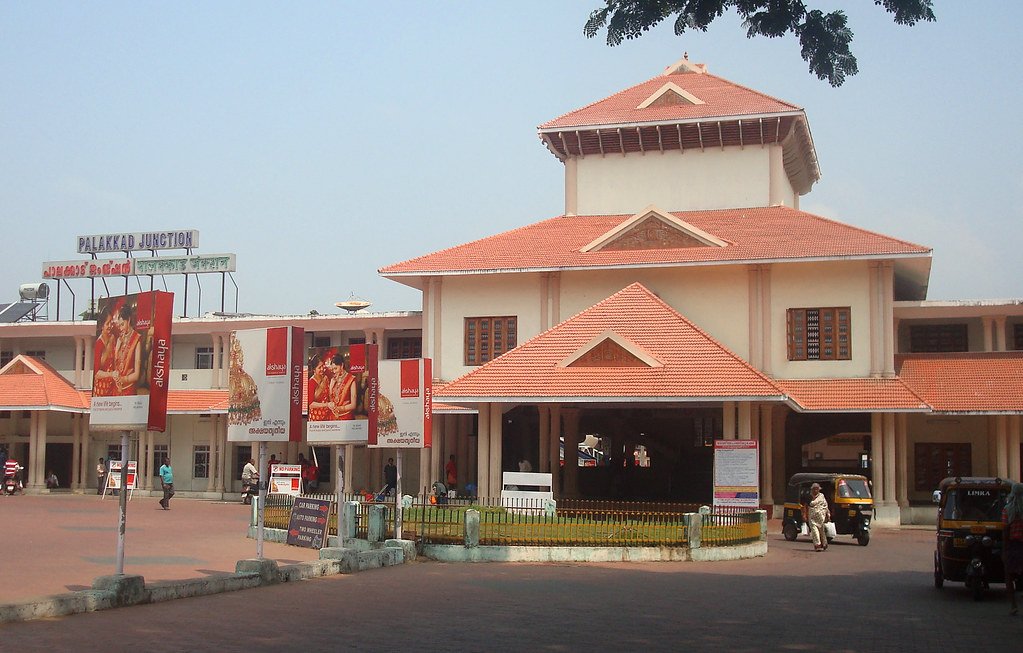
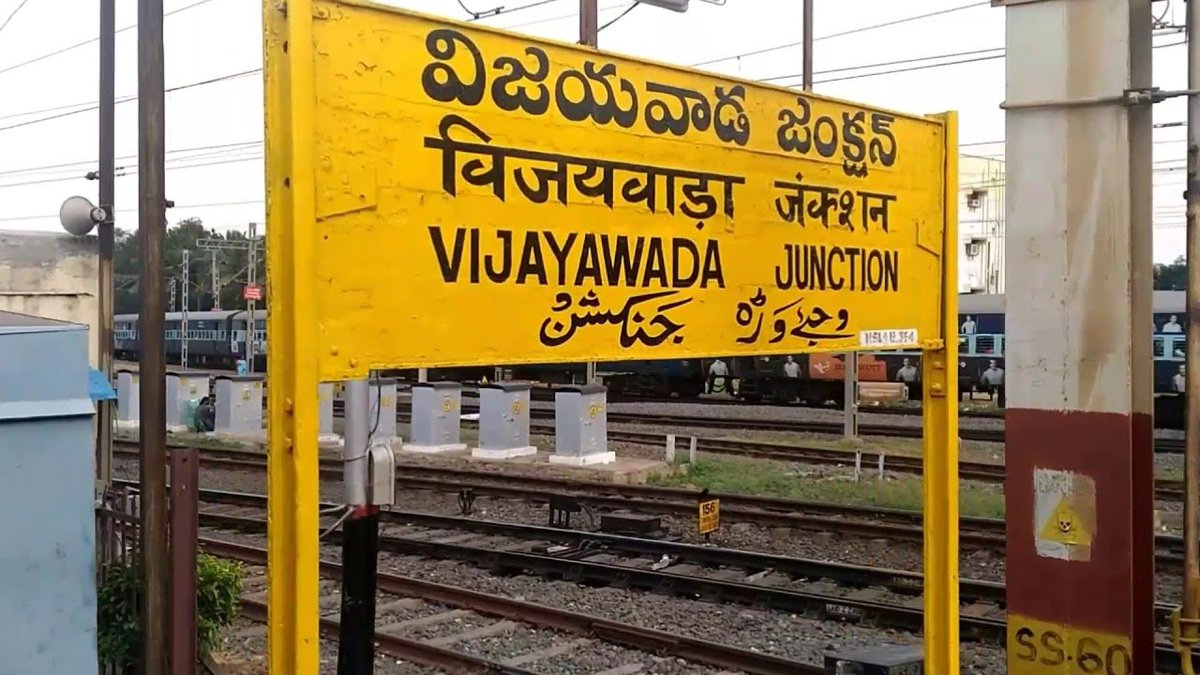

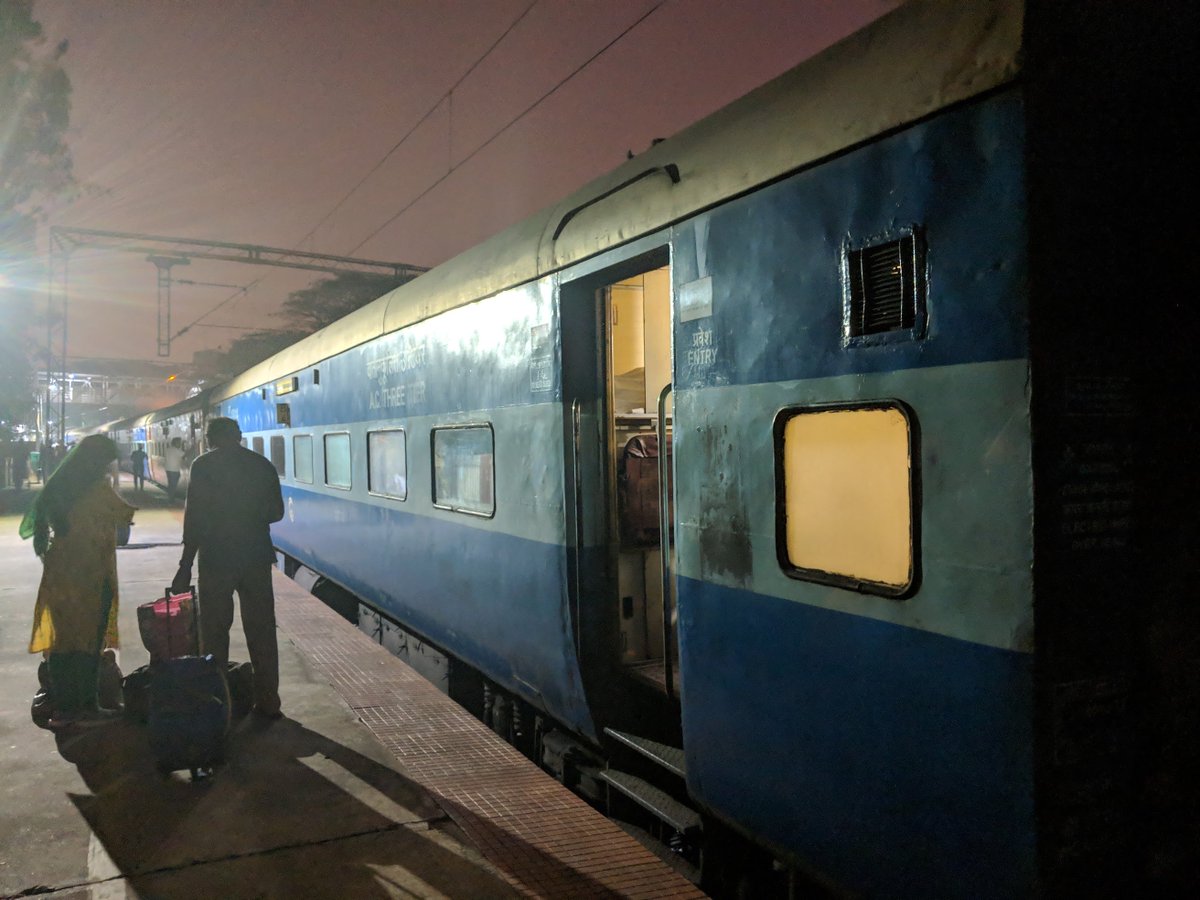 )" title="Other letters are sometimes used to indicate relative direction - BNE for Bangalore East, ERN/ERS for Ernakulam Town (North) and Ernakulam Jn. (South).(This image from an early morning at BNE, getting off the KCG-SBC Express - you& #39;ll learn the codes soon https://abs.twimg.com/emoji/v2/... draggable="false" alt="😉" title="Zwinkerndes Gesicht" aria-label="Emoji: Zwinkerndes Gesicht">)" class="img-responsive" style="max-width:100%;"/>
)" title="Other letters are sometimes used to indicate relative direction - BNE for Bangalore East, ERN/ERS for Ernakulam Town (North) and Ernakulam Jn. (South).(This image from an early morning at BNE, getting off the KCG-SBC Express - you& #39;ll learn the codes soon https://abs.twimg.com/emoji/v2/... draggable="false" alt="😉" title="Zwinkerndes Gesicht" aria-label="Emoji: Zwinkerndes Gesicht">)" class="img-responsive" style="max-width:100%;"/>
